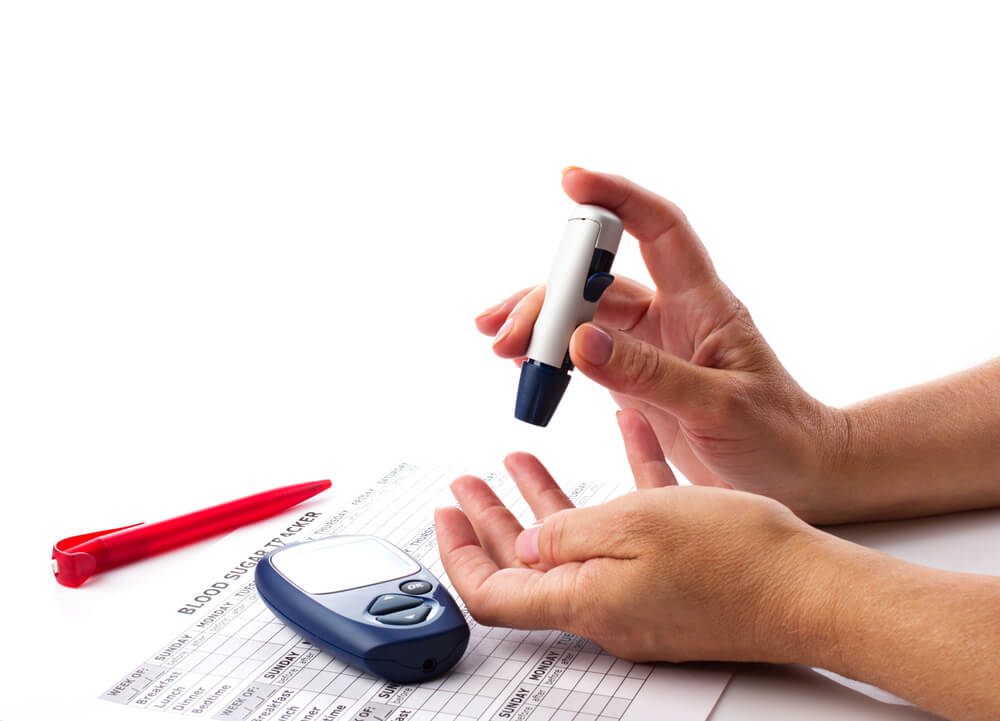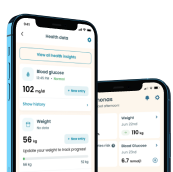The Ultimate Guide for Your Diabetes Blood Sugar Test

Treating diabetes requires consistent commitment and management as each meal and other basic activities play a significant role in affecting blood sugar. However, one way to always keep your blood sugar under control is to carry out consistent tests on your blood sugar.
Blood sugar tests are one of the most effective management procedures that people with diabetes can take to keep their blood sugar from getting incredibly high or extremely low. Medical professionals usually advise patients struggling with diabetes to perform regular tests to help them know the state of their blood sugar. Top medical institutions maintain the same stance.
Performing a blood sugar test is extremely easy, and your blood sample is the primary requirement for the test. There are many benefits to a blood sugar test, and the major one is the prevention of further complications such as digestive and kidney diseases, cardiovascular disease, and coronary disease.
This guide provides complete information on all you need to know about a blood sugar test, when to perform it and how to go about it.
What to Expect?
- What’s a Blood Sugar Test?
- Who Should Have a Blood Sugar Test? — Risk Factors
- When to Test Blood Sugar
- How to Test Blood Sugar
- Blood Sugar Test Result
What’s a Blood Sugar Test?
A blood sugar test is a test that measures your blood sugar level or blood glucose level. Usually, a medical professional determines if a patient needs the test, but this doesn’t always have to be the case as you can perform the test yourself.
Doctors usually add blood sugar tests as a part of a patient’s routine check-up to determine whether a person has prediabetes or if a diabetic patient has positive results from a chosen management plan.
The good thing about a glucose test is that the results are instant. Knowing your blood test can help you see if you need to apply some lifestyle changes in certain essential areas. These could include your diet and exercise routines, the two major determinants of your blood glucose level.
If you already have ongoing diabetic treatment, the test will help you know if it’s effective or doing more than necessary. Moreover, it’s a great way to help you and your doctor know if your management plan is great for the short and long term.
Another good thing about a blood sugar test is that it can be performed at home or in a doctor’s office. In most cases, your doctor may help you with suggestions on the best blood sugar tests to get.
Who Should Have a Blood Sugar Test? — Risk Factors
There are many reasons to perform a blood glucose test, and it’s not just about being a diabetic. A blood sugar test can be crucial even when you don’t have diabetes but have any of the risk factors:
- You are up to 45 years old or more
- You are on the overweight scale
- You barely exercise
- You’ve been diagnosed with high blood pressure (HBP), low “good” cholesterol levels (or HDL), or high triglycerides.
- You or a relative have experienced gestational diabetes
- You are insulin resistant
- You suffer from cardiovascular diseases or related conditions such as a stroke or hypertension
- You share direct ethnicity with any of the following races: Africa, Asia, Pacific Island, Hispanic, or Native American
- Your ancestry or relative has diabetes
Another reason why you need to perform the test is if you’re at risk of developing diabetic complications such as diabetes ketoacidosis, a dangerous condition that induces the release of ketones into your bloodstream and can lead to liver and kidney damage.
Diabetes ketoacidosis develops when you replace carbs with fatty foods. While the decision may lead to low blood sugar, it can also lead to ketoacidosis if your body strictly depends on fat for fuel. Other complications associated with a lack of blood sugar monitoring include heart disease and stroke.
Finally, if your body’s primary food source is sugar, then a blood test may become necessary to help you monitor blood glucose levels.
When to Test Blood Sugar

Knowing when to test blood sugar levels is critical as that would help you get the correct information on your blood glucose level and the appropriate steps to take afterward. Certain factors could influence when to take a blood sugar test, and they’re outlined below.
If You Have Type 1 Diabetes
A person with type 1 diabetes will need multiple heavy sustenances doses of insulin, which only makes testing blood sugar a priority. There’s often a thin line between having an optimal blood sugar level and a low blood sugar level if you need heavy insulin sustenance doses.
To ensure you always have the appropriate blood sugar level, you’ll need to conduct a blood sugar test according to the factors outlined below:
- Before meals or snacks
- Before or after you exercise
- Before retiring for the night or having a nap
- At night
You’ll need to test more frequently in the following scenarios:
- When ill
- When there’s a change in your daily routine
- If you change your normal medication to something new
- If subjected to stress or if you are performing a hectic activity like driving, arguing, or babysitting
If You Have High Blood Sugar or Type 2 Diabetes
If you experience high blood sugar and feel an increased urge to pee or suffer from dry throat and thirst, you should perform a test immediately. If the condition is consistent, then you should see your doctor and get a modified prediabetes management plan.
If you already have type 2 diabetes, you’ll need to perform your blood sugar test several times before a day runs out. It’s easy to determine how many tests you should perform a day based on your doctor’s recommendation and the type of insulin medication you use. If you use long-acting insulin, then testing severally is necessary, especially when you’re about to eat or going to bed.
For a person with type 2 diabetes, if you perform a blood sugar test and are in the normal range but still suffer high blood sugar symptoms, it could mean that you are only ill or stressed out and need rest. A blood test may not be necessary if you exercise constantly and your doctor deems you fit to not depend on diabetic medications.



If You Suffer From Low Blood Sugar
As stated, a blood sugar test isn’t only for people with high blood sugar. Diabetic treatments can lead to low blood sugar. When you experience any of the following symptoms as a diabetic or healthy person, then you should immediately run a blood sugar test:
- Shakiness
- Chillness or sweatiness
- Impatience or irritation
- Confusion
- Dizziness or lightheadedness
- Nausea and hunger
- Sleepiness
- Numbness or tingly sensation on the tongue or lips
- Weakness
- Anger, stubbornness, or sadness
Diabetics have low blood sugar when their dieting and insulin intake becomes excessive and negatively affect glucose production. It’s advised that people with diabetes get glucagon to help them treat low blood sugar symptoms.
If you take diabetes medication and experience low blood sugar more often, you should speak to your doctor for treatment modification.
If You’re an Expectant Mother
Pregnancy is a critical period for women with diabetes. Even healthy women may sometimes experience gestational diabetes when pregnant. Gestational diabetes occurs due to pregnancy-triggered hormones affecting insulin production, which inadvertently leads to sugar accumulation in the blood.
Pregnant women usually get to know if they have gestational diabetes during pre-delivery check-ups. If diagnosed with the condition, then a blood sugar test becomes highly paramount as it helps them keep their glucose level in the safe range.
Gestational diabetes is only temporary, and healthy women should no longer experience a surge in blood sugar levels after delivery. However, this form of diabetes can signify that the mother could be vulnerable to type 2 diabetes (about 50% chance) and should opt for a healthier lifestyle.
How to Test Blood Sugar
Knowing how to conduct a blood sugar test will help you perform the test yourself and as much as is needed or recommended by a doctor. Most blood sugar tests depend on the A1C test, which helps you know your average blood sugar level for the past three months.
The American Diabetes Association perfectly explains how the A1C test works. Namely, the test measures your blood sugar level by dividing it into three categories as highlighted below:
- An A1C test reading of <5.7%: Normal
- An A1C test reading of >5.7%: Prediabetic (or high blood sugar)
- An A1C test reading of 6.5% and above: Diabetic
How to Administer a Blood Sugar Test
Below are the major blood sugar tests and how to perform them:
Home Glucometer Tests
While there are many home tests that you can use to test blood sugar, a glucometer is the most reputable choice you can go for. There are many types of glucometers, but their testing methods are quite similar. It generally involves pricking your finger. Not to worry, this process is almost painless, and you’ll only feel a dull sting that lasts for a second.
All glucometers have their specific instructions. Generally, you’ll need to place a drop of blood on a strip that comes with the device. The strip is usually inserted into the machine. Following this, the device analyzes your blood and reads out a result in 10–20 minutes.
You can trust the result of a glucometer as long as you buy from a reputable company specializing in diabetes care and management. Also, familiarize yourself with cautionary steps you should take before performing the test, including washing your hand and reading the testing equipment thoroughly.
Continuous Glucose Monitor (CGM)

The continuous glucose monitoring system or continuous glucose monitor is an excellent alternative to the glucometer. It’s a kind of sensor that’s connected to the body and remains so for several days, up to a week. It still depends on a meter to produce blood sugar results.
The CGM isn’t exactly reliable for acute conditions and may not identify blood sugar levels. On the contrary, a home glucometer test is more reliable, and you should go for that for such conditions.
Blood Sugar Test Result
The result of your blood test for sugar levels depends on the severity of your condition and the particular timing. You can check your blood sugar readings immediately after eating or before you do.
You can also test it in the morning before breakfast. However, if you’re confused about when to test blood sugar after eating, some experts suggest having a two-hour gap between meals and the test.
The table below shows you how to read your result after performing a test based on certain circumstances.
Time
Non-Diabetics
People With Diabetes
Before breakfast
Under 70–79 mg/dL
80–130 mg/dL
Before lunch, dinner, and snacks
Under 70–79 mg/dL
80–130 mg/dL
Two hours after eating
Under 140 mg/dL
Under 180 mg/dL
In addition to adequate blood sugar testing, people with diabetes need to implement a lifestyle—including appropriate diet plans and exercise routines—that helps control blood sugar. This will prevent their condition from developing into diabetes mellitus if they’re diabetic or further diabetes complications if you have been diagnosed with diabetes mellitus.
Conclusion
Knowing how to test blood sugar is a great way to live a healthier life. A blood sugar test will help you determine if you have high or low blood sugar levels more often. This will help you know some crucial decisions that you can take to improve your health, such as incorporating healthy lifestyle routines.
Improving blood sugar levels depends on many factors, one of which is dieting. Knowing the proper meal to go for is extremely important in helping you control your blood sugar after a blood test. Our digital diabetes meal planner, Klinio, can go a long way to help you make healthier choices on the types of meals to go for.
More specifically, a meal planner will help you stick with only healthy foods that are beneficial to your condition and overall health.
Take a quiz and get your diabetes-management plan today!









